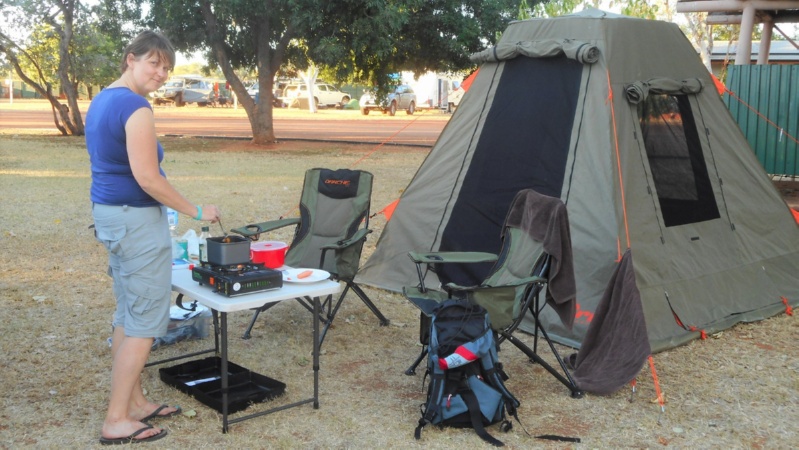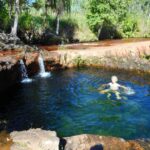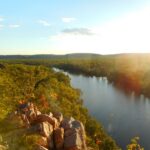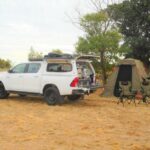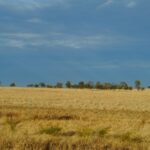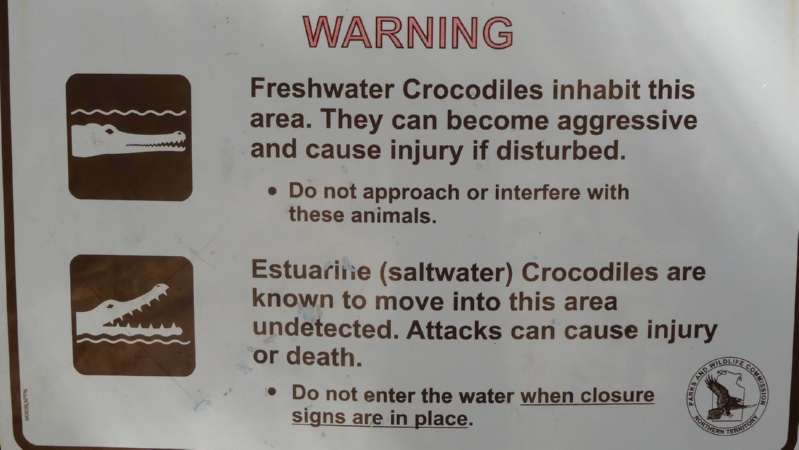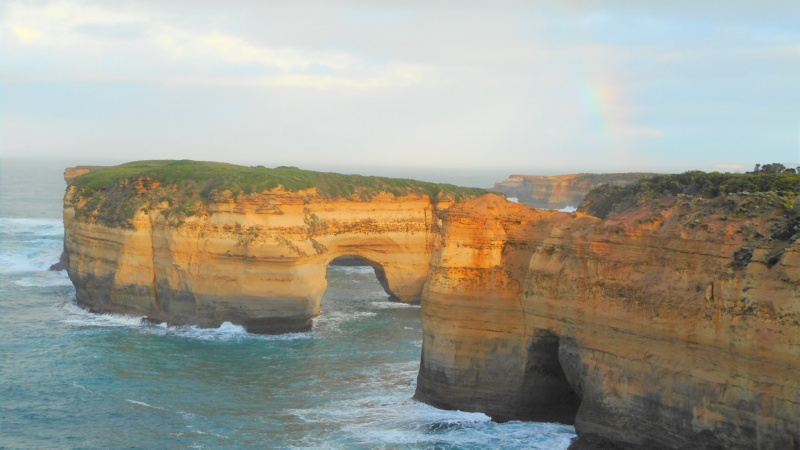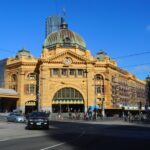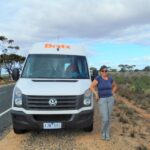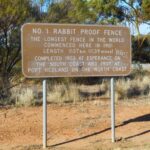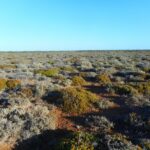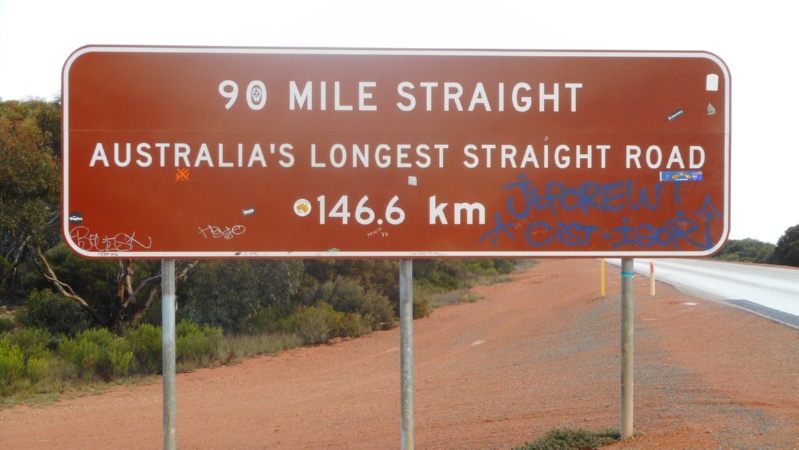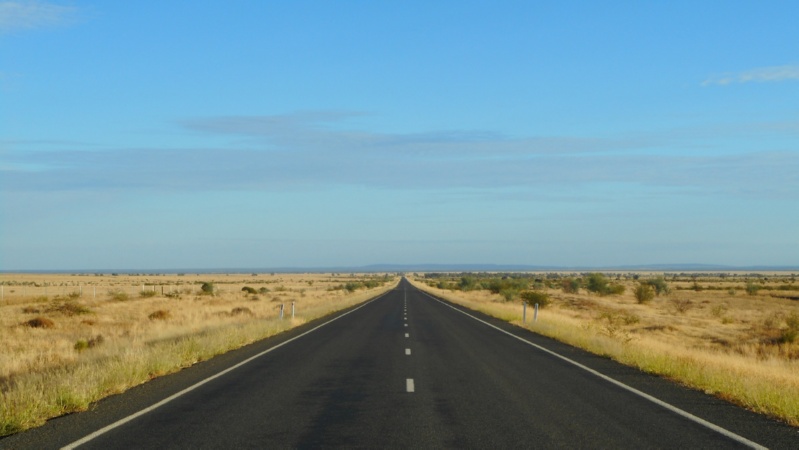Australia is an enormously popular tourist destination and for good reason. It has an abundance of natural beauty, from dry desert to tropical rain forests and beautiful sandy beaches. But Australia is not a cheap country to travel in, and distances are huge. However, it is still possible to make cheap trips around Australia. This is how we discovered the outback on a budget.
Get your rental car or camper van for free
That's right, you can get your transportation for free! Many people (with larger budgets) rent cars and camper vans, mostly for a one-way rental. Crossing Australia is great, but driving the same way just to drop off your camper van is not very attractive. So many of these vehicles end up in another place from where they were picked up. The rental companies want these vehicles returned. So they are offering deals to drive these vehicles from A to B for a rental fee of A$1 per day. It is called a 'relocation'. These relocations are the basis for cheap trips around Australia.
To top it off, they often give you a budget for fuel expenses, which makes it even a better deal. You don't have to feel sorry for the rental companies though, these costs are already paid by the original renter: the so-called 'one-way-rental fee'.
There is a catch...
Or a few tiny rules that you have to abide by:
- You cannot choose your exact dates and route in advance. It totally depends on when and where a vehicle needs to be returned. So keep an eye on the appropriate websites, act quickly and be flexible.
- They allow you a limited amount of days to drive the car/van from A to B. This is often barely enough and does not allow a lot of time for sightseeing. In most cases, the rental companies offer you the option to buy 1 or 2 extra days at a reduced rate. This way you can relax a little and take some time for sightseeing.
The bottom line is that you have to be flexible in dates and destinations to be able to find cheap trips around Australia. We found both our free camper vans through Coseats.
Potential Routes for Cheap Trips Around Australia
There are a number of possible routes for crossing Australia. Availability depends on the season. Some example routes (which can also be done in reverse):
- From Adelaide to Alice Springs: 1,534 km (953 mi)
- From Alice Springs to Cairns: 1,945 km (1,209 mi)
- From Brisbane to Darwin: 3,424 km (2,127 mi)
- From Broome to Alice Springs: 1,702 km (1,058 mi)
- From Cairns to Darwin: 2,356 km (1,464 mi)
- From Melbourne to Alice Springs: 2,258 km (1,403 mi)
- From Melbourne to Hobart (including ferry): 720 km (447 mi)
- From Perth to Adelaide: 2,696 km (1,675 mi)
- From Sydney to Cairns: 2,421 km (1,504 mi)
Our trip across Australia
Stage 1: From Brisbane to Darwin
Day 1: late departure
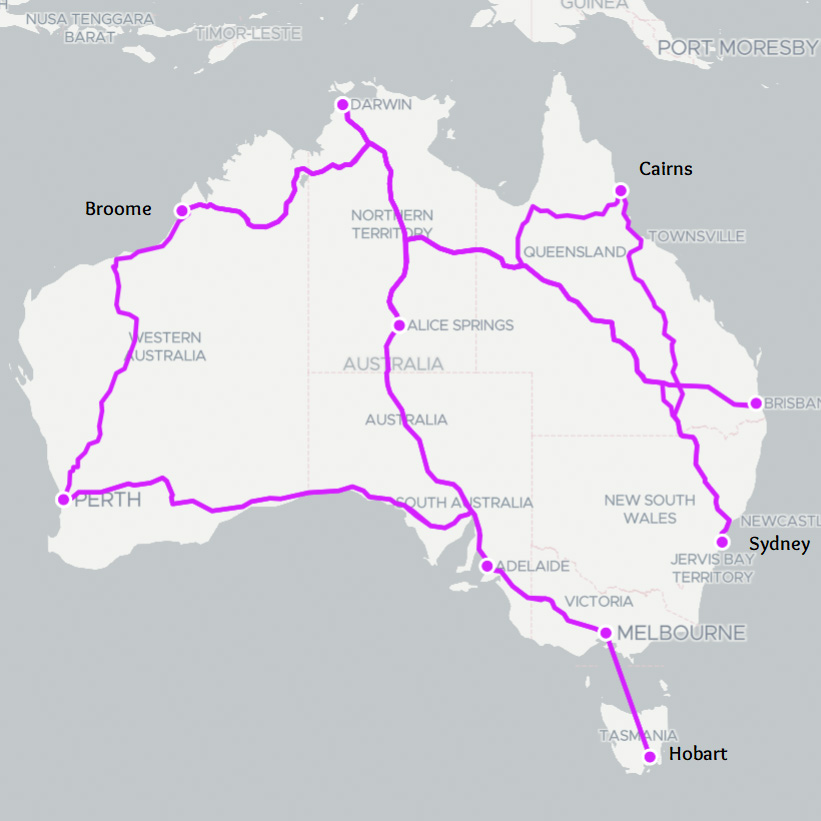 We booked this trip a couple of days before departure. Darwin was on our wish list, and this relocation deal came with a cool 4WD vehicle and a tent that had to be mounted on top of the vehicle. Pickup on day one was after 12.00. (This is usual for relocation vehicles, which is a bit of a nuisance because it leaves you with little time on the first day. But hey, free, so no complaints).
We booked this trip a couple of days before departure. Darwin was on our wish list, and this relocation deal came with a cool 4WD vehicle and a tent that had to be mounted on top of the vehicle. Pickup on day one was after 12.00. (This is usual for relocation vehicles, which is a bit of a nuisance because it leaves you with little time on the first day. But hey, free, so no complaints).
When we arrived at the rental company, it turned out our vehicle was not ready on time. They offered us a brand new Totoya Hilux instead, which came with a regular tent. The car was fully equipped with cooking facilities, a water tank, tent, beds, sleeping bags, and all kinds of cooking utensils. Looked good to us!
Don't go off-road with the 'off-road vehicle'
Although the Hilux is an 'off-road vehicle', one of the conditions was we weren't allowed to use it on unsealed roads. I guess they did not want to wash it (or they were afraid we would get lost or wreck the vehicle). Another rule they are pretty strict about: do not drive before dawn or after dusk. This is to avoid collisions with animals (and wrecking the car) if you drive in the dark. Because it was winter at that time, this meant we had about 9 hours of driving time each day. With this in mind and knowing that we had 3,426 km ahead, we booked ourselves an extra day and now had a total of 8 days to get from Brisbane to Darwin.
We better get a move on
So that meant 3,426 km (2,219 mi) in 8 days, an average of 428 km (277 mi) per day. With the first day nearly over, we had to get a move on. Before we could take off into the vast desert, we had to do some serious shopping to last us 8 days. Supermarkets are fairly rare in the Australian outback and never mind finding your favorite plant milk or vegan patties. The 'bush' is the domain of non-vegans after all. After that, we only had a short time left before we had to stop for the night. I (somewhat) shamefully admit that we did not put up the tent that first night. We rented a cabin instead. We were just too exhausted (and the idea of wild animals near our tent scared us).
Day 2: Queensland outback
On day two we had an early start and got acquainted with the Queensland outback. The natural beauty is incredible. Fields as far as the eye can see and roads going into infinity. And of course kangaroos, you can hardly miss seeing them. Unfortunately, the majority of kangaroos we saw were dead, lying next to the road after being hit by other vehicles. Fortunately, we did spot some live ones hopping in the fields.
Camping in the bush
We used the free Campermate app to locate places to camp overnight. We decided to only use official campsites, for a few reasons: first of all, our vehicle did not have an onboard toilet, so for sanitary relief, we relied on actual toilets. In Australia, you are allowed to camp overnight at rest stops, but we were not quite that adventurous. So our first stop was at a campsite, next to a gas station. Apart from a few kangaroos traveling through, we were the only guests.
Did you hear that?
The first time putting up our tent was an adventure in itself. It was already getting dark so we did not have a lot of time, and we had never put up the tent before. Luckily it turned out to be super simple. We just had to roll out the canvas put up one single pole in the middle. That's the tent done! The excitement was much more in the realization that we were possibly surrounded by deadly snakes and spiders. Australia has its fair share of these creepy crawlies. Allegedly, 9 out of 10 of the world's deadliest snakes live in Australia. Not a fun thought when you are trying to put up a tent in a field. But we managed it anyhow and had a fairly good night's sleep. Did you hear that?
Day 3: endless roads and flies
Day three was more endless landscapes. Sometimes we drove several hours without seeing a single vehicle. It was magically quiet and beautifully serene. I had to keep my eyes on the road at all times though, especially the borders where kangaroos and/or wallabies would be waiting to jump across the road (I had a few narrow escapes). We put up the tent at a fly-infested campsite and were rewarded with an epic sunset. After the sun had set the flies took off and the frogs appeared. The toilets, showers, and sinks were full of the creatures, and navigating them was a bit of a challenge. It's a shame the frogs did not eat all the flies.
Day 4: more driving and stocking up in Mount Isa
On day four we made a quick pit stop in Mount Isa. It is a fairly decent size town, not too far from the border with Northern Territory. Basically the only place en route with a decent supermarket. So we grabbed this chance to stock up on some more essentials, such as fresh fruits and vegetables. Then we were off to find a campsite. The idea was to camp somewhere between Mt. Isa and the Stuart Highway (the one going North-South from Adelaide to Darwin), but it turned out there is nothing in between that can be classified as a campsite. So we just carried on till we hit the junction with the Stuart Highway at Warumungu and found a campsite behind the gas station. That was one hell of a long day of driving. We treated ourselves to chips/fries but they were so heavily salted we had to scrape most of it off.
Australian Outback Veganism
How vegan is the Australian outback anyway?
Australia does have some vegan-minded people, unfortunately, none of these people tend to live in the outback. They mostly live in trendy Sydney, Adelaide, Bristol, and Melbourne, where you will find plenty of restaurants. Driving across Australia you are likely to see more cattle than kangaroos. Meat is still the norm, there is no way around it.
So bring along your own food if you can. Shop in large supermarkets along the coast, because you are not going to find anything labeled vegan in the outback. Meals at truck stops almost exclusively consist of meaty pies and chips. Perhaps not surprisingly, fresh vegetables are a rare find and incredibly expensive.
Try one of these 7 tips on how to travel vegan.
Day 5: taking it slow
We had already covered quite some distance by now, so we could take it a bit slower on this day. We saw more campsites along the way from here to Darwin, so we didn't have to drive these crazy long days anymore. The scenery also changed gradually on the 4th and 5th day. The dirt got redder and it's got a bit more hilly. We even experienced a few decent showers and accompanying rainbows. Before sundown, we found a nice campsite just outside Katherine, where we hiked up to the top of Katherine Gorge for a beautiful sunset and view over the river below.
Day 6: 'bird-seeing'
At this point we were not that far from Darwin, so decided to take it easy and do some sightseeing. We found ourselves a lovely campsite and watched the local bird feeding spectacle. The campsite owner fed hundreds of colorful birds (I would call them parrots) daily. It was a fantastic spectacle to watch. In the afternoon we went for a nice walk and ended up at a few rock pools where it was possible to swim safely. Before jumping in any kind of pool in Australia you always need to check the Crocodile Safety signs. They can be pretty harmful or even kill you, especially the saltwater ones. These pools were marked safe so we had a few refreshing dips.
Day 7: destination Darwin
We had two days left to get to Darwin but we could easily cover that in one day, so we decided to drive to Darwin and use the car for sightseeing on our final day of the rental. We covered the entire 3,424 km in 7 days. It was a lot of driving but most certainly worth it! Although it did not allow for a lot of sightseeing, we did get to see a lot of the country.
Stage 2: From Melbourne to Perth
After we spent a few days in Darwin, we were hoping to get a camper relocation from Darwin to Alice Springs, but nothing became available in the following couple of days. We did find one from Melbourne to Perth so decided to go for that one. We booked a flight to Melbourne and had a couple of days to explore the city before we started on the second stage of our crossing Australia trip.
Day 1: the great ocean road
Melbourne to Perth is about 3,600 km (2,241 mi), we figured we should be able to do that in 7 days. The first day was half lost in formalities. The drop-off on day 7 would also cost us nearly half a day, so with that in mind, we figured driving on average 600 km (373 mi) a day should get us there in time. We started our drive along the Great Ocean Road and soon found a nice campsite, not far from the ocean, for the night. Our relocation vehicle this time was a camper the size of a large van. It was fully self-contained. We could sleep, cook, pee and shower in the van. Full-on luxury!
Day 2: Adelaide and beyond
Day two was a long stretch all the way to Kimba, nearly 1,000 km. The scenery consisted of beautiful rolling hills, fields with cows, eucalyptus trees, and curvy roads. The road leading into Adelaide was a steep one down. I don't know how many signs I saw warning us to slow down. Unfortunately, we didn't have time to get into the city center, we had to carry on to make our day's target. We ended up at a camper site, full of campers and retirees. They were all there for the bowls tournament at the nearby sports grounds that weekend. We wished them the best of luck and had an early night, after remodeling the camper to turn the seats into a bed.
Day 3: the Great Nullarbor
On the second day, we were surrounded by green meadows, fields, and trees. But on day 3 the desert loomed large in front of us. The landscape changed drastically and became dryer, dustier, and there were fewer trees. Today's stretch would take us to the very edge of the great Nullarbor Plain. We found a decent spot to camp on a sandy field next to the Nullarbor Roadhouse. There were a few campers out there, at least we were not the only ones attempting the cross the great nothing.
Day 4: losing yourself on the Nullarbor
On our fourth day, we set out to cross the great Nullarbor Plain. It is an exciting stretch of road. Even some of the Australians we were talking to before our trip were in awe that we would attempt to cross it by car. None of them had ever done it themselves. Why would you be stupid enough to cross it by car if you can just jump on a plane to Perth? their reasoning was. Well, because we can! The desert crossing was both exciting and boring. The name Nullarbor literally means 'no trees'. And that's what it is, a giant plain without any trees. It's not a big sandbox though, a lot of it is covered in shrubbery. The scenery was virtually the same the entire day, but the vastness of it was exciting. At some point, there were viewpoints from which you could look out across the ocean towards Antarctica (Not that we could see it, but it was still thrilling to no end).
Day 5: longest road, the 90 mile straight
The landscape changed little the next day, although there were more trees. We continued our drive on the '90 Mile Straight'. This is the longest stretch of straight road in Australia, nearly 147 km. As far as we can tell it is, indeed, straight as an arrow.
Australian Outback Wildlife
There is plenty of wildlife you can come across in Australia. Some animals are easier to spot than others. Some you wish to avoid at all cost.
The wildlife we wanted to see and did: Kangaroos, wallabies (they might look the same from a distance, but they are different species), camels, cows, parrots, Kookaburra, flying foxes, sugar gliders.
The wildlife we wanted to see but didn't: Wombats (except a dead one), koalas, platypus, thorny devils.
The wildlife we didn't want to see, and didn't: Snakes, spiders (no thank you)
The wildlife we didn't want to see, but did: Zillions of flies (my goodness the flies!!!). They are everywhere and crawl into crevices you did not even know you had.
Day 6: mines, but no gold
Day six took us to Kalgoorlie, a gold mining town in the heart of Western Australia. The most interesting site here is the Super Pit, once the largest open-cut gold mine. It was still in operation when we were there. The views from the top of the pit were amazing. The ridiculously large excavator trucks looked like little ants down there. Kalgoorlie is also the perfect place to do some shopping, and it has a few decent campsites. This was where we parked for the night.
Day 7: back to civilization in Perth
On our last day of the cross from Melbourne to Perth, the landscape changed, and not necessarily for the better. All of a sudden there was a lot more garbage on the roadside. We found Australia's roads to be very clean, generally, nobody just chucks out their garbage. But that changed in the Kalgoorlie region, for whatever reason. The last part of the journey into Perth was downhill, which allowed a good view over the city and the ocean beyond.
We really enjoyed both our 'cheap trips around Australia'. It was a lot of driving, but we got to see a lot, and there was plenty of time for reflection. If I had to make a top 2, I would put the Brisbane – Darwin trip in the first place. It has a more varied landscape and it has an even more remote feeling.
You can argue if this way of traveling can be classified as 'sustainable travel'. But that vehicle is gonna go from A to B, no matter what. If you don't drive it, someone will. Then it might as well be you. And you can always pick up some hitchhikers to share the drive.
And as a bonus, we got to see the cute quokkas on Rottnest Island, just of the coast of Perth. The most adorable on the planet, and there were so many of them. If you can, include this stop in your trip.
So if you are up for some adventure and are on a tight budget, this is a great way to cross Australia!



